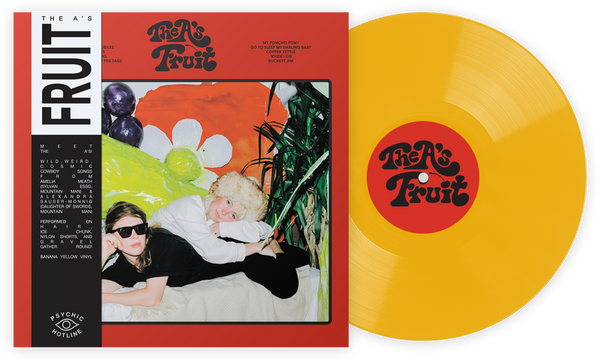Historiallinen katsaus staattiseen näytteenottoon rap-musiikissa
Miksi rap-tuottajat rakastavat niin paljon äänellisiä virheitä?
Any vinyl lover is familiar with the ambient static, crackle and pops that spark into life when a needle hits the groove of a record. Those with audiophile tendencies might do their best to eradicate these sonic imperfections—but in the hip-hop world they've become beloved parts of iconic projects. De La Soul's first two sampledelic albums are spritzed in crackle (“Plug Tunin’” alone is like a rap waltz led by static); the Wu-Tang Clan’s debut album is drenched in ambient hiss from VHS kung-fu tapes and ’60s soul records. Jay-Z's breakthrough radio hit, “Ain’t No Nigga,” is bolstered by the fuzz of the “Seven Minutes Of Funk” track it samples from, while the dusty murmur running through Nas’ Pete Rock-produced Illmatic cut "The World Is Yours" helps convey a nostalgic vibe. Just like hip-hop's genesis story involves DJs taking existing songs and flipping small segments of the music into something new and fresh, in the hands of hip-hop producers these sonic blemishes have been turned into a virtue—and it's one that's persisting even in a world where sampling MP3s sourced down YouTube wormholes is becoming increasingly common.
Onra is a producer based in Paris who found acclaim with his Chinoiseries trilogy that launched in 2007. These instrumental hip-hop songs—which now number 100 tracks in total—use Chinese vinyl records as a singular sample source. The idea was sparked by a trip to the Far East, where Onra’s beat digging instincts kicked in. The vinyl stash Onra amassed on his oriental travels was in far from mint condition—but sampling the thick layer of dusty ambience adds to the mystical vibe of the Chinoiseries experience.
"Dirty old imperfections," is how Onra characterizes the static and crackle that’s made its way into his finished tracks. "It's something that brings up nostalgia and melancholy." A song like "Memories From 1968" backs up this ideal, as a scuzzy guitar loop duels with marauding crackle, while "Thank You Very Much" is defined by waves of static creeping over the other components of the track. Under Onra's control, the abundance of sampled vinyl ambience has the effect of making it seem like you’ve tuned into an exotic radio station, with the dial precariously perched in just the right position to receive a broadcast gently caressed by interference.
Effective as it is, Onra says the texture of Chinoiseries came about through necessity rather than design: "It was never a conscious decision. I just had to use what I had. When I first played some of the demos of these tracks to people they thought I was crazy to keep it that raw."
Hailing from upstate New York, the Doppelgangaz are a hip-hop duo who also know all about static imbuing a song with a raw timbre—but in one case the degree of static has split fans. Consisting of the MCs and producers EP and Matter Ov Fact, the group’s amassed a following of fans who dub themselves the Shark Nation; the most devoted of the sect show up at gigs sporting the group's signature black hooded cloaks and rap along to songs that mix up kooky medical terms with gourmand food references. A significant part of the Dopp Gang's back catalogue boasts a scuzzy patina: The eerie "Suppository" rustles along with pops sputtering in the mix; "H.I.T.H." pairs simmering static with a lilting melody that brings to mind a Caribbean gospel song; “I’ve Been” uses swathes of gently undulating sonic fuzz to match the introspective lyrics. But "Skin Yarmulke," from 2013's HARK, upped the ante to the point where it's become the group's most divisive release: At times, it's like the clamorous and rampant static is assaulting the rest of the slinky beat.
"You're either into the soothing ASMR vibes of the loud, overbearing static or you're not," says EP, referencing Autonomous Sensory Meridian Response, a condition that occurs when you experience tingles down your spine. "Those that are not are definitely not afraid to tell you how much your song sucks—and not based on the lyrics or the beats, merely based on the static. People have said they can't even listen to it. But I love that we have a song that causes so much controversy—I get my jollies off by that."
The Doppelgangaz claim they have "zero experience" cleaning up sonic distortion from the records they sample. It's a situation they've embraced. "An unopened vinyl will definitely leave us with less static but our favorite ones from the dollar bin usually have a higher static to music ratio,” explains EP.
Dirty Art Club is a producer from North Carolina who agrees with this sentiment. His latest project, Basement Seance, uses evocative layers of static and fuzz to conjure up a dreamy vibe. “Those sounds also bring something musical to a song without being musical within themselves,” he says. “Noise is sometimes a big part of a song's flow and repetition, depending on how it sits rhythmically, based on how the samples were cut and arranged.”
When producers welcome the flaws of the vinyl record they’re sampling, it also adds a stamp of individuality to the finished beat. As Dan The Man points out, each copy of a vinyl record will be physically different: "If I sample a Diana Ross record and four other people sample a Diana Ross record, the static or the crackle is not going to be the same ’cause it's all about the wear of the record. This helps with the feel and soul of a beat."
When he's holed up in the studio with an artist, Dan The Man says that some clients ask him to clean up a sample. He says there's EQing methods that can be used "to help filter out the high end so that the crackle and the static won't be there," and adds that the digital software Pro Tools and Logic include plug-ins to achieve a similar effect. From an engineering point of view, he also warns a newer generation of producers who favor sampling from YouTube files that “the quality is just not good at all and there’s a funky thing going on in the high end and it just sounds bad.” But he also says that many producers “ask for that hiss and crackle” to be retained, especially when a sample has been replayed by instruments in the studio; in those cases, actually adding some sonic distortion can help it feel “more like an original record.” (Dan The Man adds that some modern synths even feature a record crackle sound effect.) Ultimately, he says that it’s a judgment call about how much static makes it through to a final song: “Is this taking away or is this adding to the record?”
The idea that sonic imperfections actually add something extra to a hip-hop track has persisted even in sanitized digital music times. As EP says, “I just feel like it's texture and another impactful layer that plays a major role in setting the mood. It can either provide a real dark feel or a nice sense of warmth.” Infusing a song with the audio flaws and quirks of the original sample source also reminds the listener that there’s a history and heritage behind the new song that comes from the producer’s commitment to collecting vinyl. Hearing the fond pop of a burst of static before the beat kicks in and the MC begins to rhyme reinforces music as a tangible and emotional experience. Connecting the dots between his days as a fan and a producer, Dirty Art Club recalls owning a “little portable record player” as a kid and repeatedly listening to a small number of classic soul songs. “So I was instantly fascinated by the use of samples when I got put on to rap in the early-’90s,” he says. “I still feel that way now when I hear a beat come on that’s saturated with vinyl noise.”
Phillip Mlynar kirjoittaa rapparien, kissojen ja ruoan pyhästä kolminaisuudesta. Kerran hän joi mustaa ja vaaleaa olutta MF Doom'n kanssa journalististen syiden takia.
Liity kerhoon!
Liity nyt, alkaen 44 $Exclusive 15% Off for Teachers, Students, Military members, Healthcare professionals & First Responders - Get Verified!












